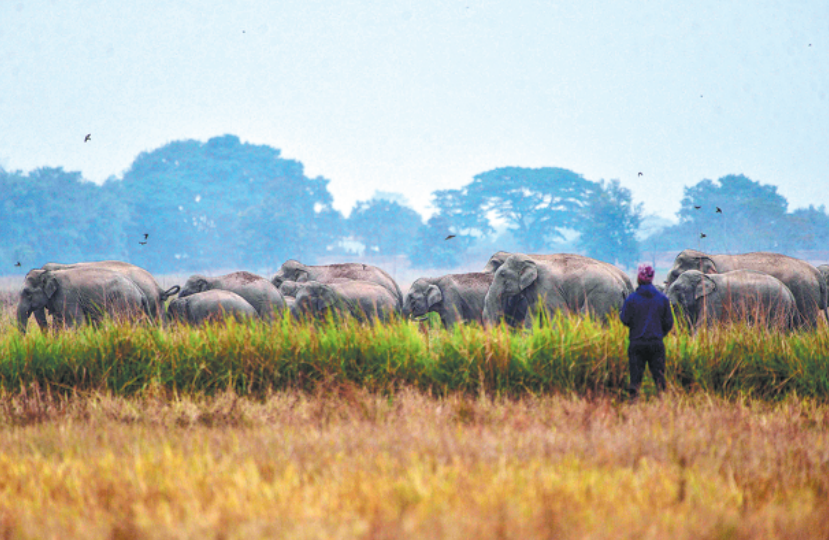
India is establishing a survival center for endangered Asiatic elephants in the state of Odisha in eastern India. Called the Center for Species Survival: Asian Elephant, it will come up near Chandaka wildlife division in Bhubaneswar, Odisha.
The Asiatic elephant, also known as Asian elephant, is the largest living land animal in Asia.
Mohan Charan Majhi, Odisha's chief minister made an announcement on Aug 21 calling for global collaboration to ensure peaceful coexistence between humans and elephants.
He said the elephant survival center is to be established in collaboration with the International Union for Conservation of Nature Species Survival Commission, Wildlife Trust of India, and the Columbus Zoo and Aquarium.
The center will explore research, policy, and best practices — not just for Odisha, but for all of South and Southeast Asia, he said.
It will also serve as a regional hub for advancing science, shaping policy and driving community action across Southeast Asia for elephant conservation, he said.
"In Odisha, elephants are more than animals — they are part of our identity, history and spirituality. The elephant, as the national heritage animal, truly holds a special place in our hearts," he said.
The expansion of agriculture and infrastructure growth have been reducing traditional elephant habitats, resulting in human-elephant conflict, said the chief minister, expressing concerns over rising conflicts due to habitat loss.
The construction of linear infrastructure like roads and railways frequently intersects elephant migration corridors, causing fragmentation.
As India's human population and economy grow, agricultural and residential areas expand into elephant habitats. A 2023 study found that India had lost 86 percent of its elephant habitat since the 18th century.
Between 2019 and 2023, human-elephant conflict resulted in 2,853 human deaths, peaking at 628 in 2023. States like Odisha, Jharkhand and West Bengal recorded the highest number of casualties. Approximately 100 elephants were also killed annually due to conflict.
As their natural food sources diminish, elephants increasingly raid agricultural fields for crops like rice and maize, which often leads to conflict with farmers.
Vision for protection
The chief minister outlined Odisha's initiatives, including mapping elephant corridors, restoring degraded forests, empowering local protection groups, strengthening anti-poaching squads, and using GPS collars, drones and AI cameras for tracking elephant movement.
He also highlighted Odisha's comprehensive approach to manage this challenge by protecting elephants while safeguarding communities.
"Our vision is to create a development model for Odisha where elephants roam freely, our forests remain healthy, and communities coexist in peace with animals. This model will inspire the rest of the world," he said.
The workshop brought together conservationists, researchers, policymakers and international delegates to discuss strategies for mitigating human-elephant conflict and ensuring sustainable coexistence.
"This workshop was not just a discussion, but the beginning of a coordinated global movement where Odisha is leading from the front. The intensity of the challenge is matched only by our collective resolve. We have moved beyond merely managing conflict to actively building pathways for coexistence.
"The key takeaway is clear: the future of the elephant is inextricably linked to the well-being and involvement of the communities who live alongside them," he added.
THE STATESMAN, INDIA
微信扫描下方的二维码阅读本文


